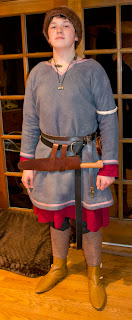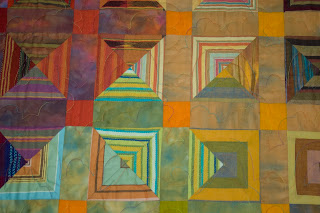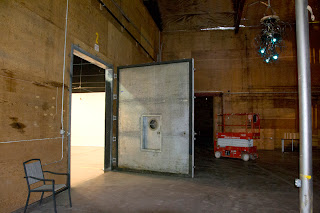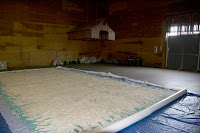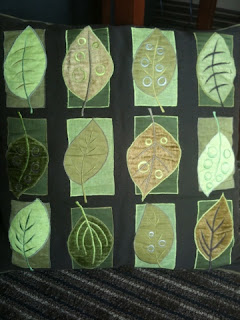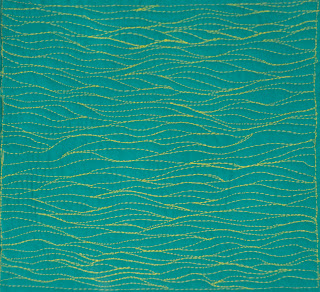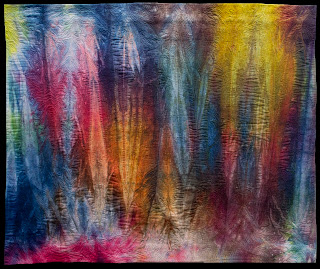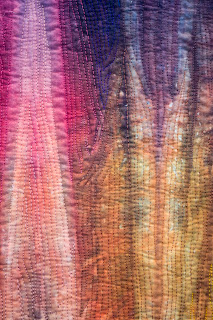One of the most difficult things to deal with as an artist is being rejected for a show or by a gallery. It stops many in their tracks… some simply don’t enter shows for the fear of being rejected, others get depressed or bitter over not being chosen, and the worst of all is those who stop creating. If you look at any successful artist, they’ve experienced rejection countless times.
 |
Monet’s 1869 painting “The Magpie” was rejected by the Paris salon and now is
one of the most beloved paintings at the Musee d’Orsay |
Between 1748–1890, the Salon, the official art exhibition of the Académie des Beaux Arts in Paris, was the greatest annual art event in the Western world. At the budding of French Impressionism, the selection committee for the Salon was conservative and felt that the impressionistic style was lacking in finish. The list of those illustrious artists who were denied entry to the Salon includes Monet, Courbet, Millet, Corot, Delacrouix, Whistler and Manet, as well as many more. In 1863, the Salon jury rejected over 3000 pieces, leading the rejected artists to hold an alternate salon, which became known as the “Salon des Refusés” or the Salon of the Refused or Rejected. Subsequent Salons des Refusés were mounted in Paris in 1874, 1875, and 1886. Now we look at some of the fabulous art and artists from this period as some of the most treasured pieces in history… yet they were all rejected.
In the world of literature, writers have to have perseverance to get through or even thrive in the face of rejection. Here are some comments from publishers… Guess which book/author they refer to (answers at bottom of article)!1
1. “An absurd and uninteresting fantasy which was rubbish and dull”
2. “It is impossible to sell animal stories in the USA.”
3. “We found the heroine as boring as her husband had.”
4. “For your own sake do not publish this book.”
5. “… so dry and airless, so lacking in pace, that whatever drama and excitement the novel might have had is entirely dissipated by what does seem… to be extraneous material.”
6. “We are not interested in science fiction which deals with negative utopias. They do not sell.”
7. “Get rid of all that Indian stuff.”
8. “Unsaleable and unpublishable.”
The list could go on and on. But what really matters is how do you deal with rejection?
It’s funny, I had planned writing this article for our Contemporary QuiltArt Association newsletter to help encourage all of our CQA artists to continue (or start) entering in the CQA shows. Then, the same day I wrote it, I received the notification from the Rio Patchwork and Design Festival for the works selected to be sent to two Brazilian shows. My pieces were not included. In fact (and I don’t say this to get pity or with any ill will) while I was one of the artists chosen by the CQA jury, I was the onlyone that was not chosen by the show organizers to have any pieces go to Rio. Whew! That’s hard to say… I feel like I’m really putting myself on the line between embarrassment and vulnerability. Why am I telling you this? I want you to understand that we all have this happen. There are many ways of combating the negative emotions that can occur with rejection.
· Ask yourself what you can do better. Or, if appropriate, ask the one (such as a gallery owner) making the decision. By analyzing any weaknesses you may have, whether in technique, design, presentation (photography), or topic/content, you may decide if you need additional practice, classes, or other forms of learning to master your craft.
· It takes many no’s to get a yes. Sometimes you just need to soldier on and apply to the next show, and the next, until you find the one(s) that accept your work. Count every rejection as a step closer to getting accepted.
· Realize you don’t fit in everywhere. You don’t necessarily know why you weren’t chosen, but it may just be that your style doesn’t meet the aesthetic desires of the person making the choice. In another venue, they may sing your praises! Find the people that get you and what you are doing… ones that appreciate you. Your artist’s style or subject matter may not be compatible with other artworks, your work may be the wrong size for what is being looked for, or the subject matter may not be appropriate, such as when a gallery only shows artists who are local or whose work reflects local subjects.
· Keep doing what you’re good at. Don’t compromise yourself and start doing something that you don’t enjoy or doesn’t express what you want to express. In fact, the more you do what you do and the harder you work, the better you will get at it.
· Many no’s are temporary. The no may turn to a yes when the timing is right… when they are looking for your kind of work, or when a different person sees it.
· What’s next? A great way to get over a rejection is to decide what you’re going to do next… either in the studio or as a way to get your work shown. “I take rejection as someone blowing a bugle in my ear to wake me up and get going, rather than retreat.” Sylvester Stallone
· Don’t take it personally. While your work may not have been chosen, it doesn’t mean that it is not valid or that you are not a good artist.
· Recharge your batteries. Do something good for yourself… take a walk, go to a museum, get a massage, or nurture your studio space by adding something that makes you happy (an inspirational poster, plant, or new music to listen to while you work.)
· Remember why you do what you do and to persevere. While your art process may be a means of self-expression, there is joy when you share your art with the world. Believe in yourself and persevere. Persistence is probably the number one reason that most artists succeed. Make lots of art. Make lots of mistakes and learn from them. Keep applying to shows and then make more art.
So, after licking my wounds for a day, I’m back at the sewing machine, starting my new piece for the Salsa! CQA show at Mighty Tieton. Reading through different articles and artists’ experiences of rejection has been helpful… even inspiring. While there may always be a bit of an initial sting when you find your work has not been accepted, you can use that as a poke to get you back in the studio, creating.
_________________________________________________________________________________________
Authors & Books:
1. William Golding “Lord of the Flies” Rejected by 20 publishers
2. George Orwell “Animal Farm”
3. Mary Higgins Clark – short story
4. D.H. Lawrence “Lady Chatterley’s Lover”
5. Ursula K. Le Guin “The Left Hand of Darkness” won the 1969 Nebula Award for Best Novel and the 1970 Hugo Award
6. Stephen King “Carrie”
7. Tony Hillerman (when he started his Navajo Tribal Police mystery novels)
8. Ayn Rand “The Fountainhead”
1Kerns, Michelle. “30 famous authors whose works were rejected
(repeatedly, and sometimes rudely) by publishers” Online:
Oltuski, Romy. “Famous Authors’ Harshest Rejection Letters.” Online:

